Ever wonder why some baby animals are born ready to explore while others need more time and care? It’s all about being altricial or precocial. These might sound like big words, but don’t worry; we’re here to explain everything you need to know.
Understanding the difference between altricial and precocial can help us unravel the fascinating journey of how animals grow and develop. So, let’s begin! It’s time to learn about how baby animals enter the world!
Key Points
- Altricial animals are born helpless, while precocial animals are born relatively mature and mobile.
- The 7 key differences between altricial vs. precocial species include development, dependency, nesting, social skills, growth rate, reproduction, and cognition.
- Altricial examples include humans, domestic cats, and dogs, while precocial examples include giraffes, horses, and elephants.
- Some species, like gulls and terns, are semiprecocial or semialtricial.
- Live-bearing fish, such as swordtails and guppies, are precocial and exhibit hunting behavior shortly after birth.
- Humans are altricial and require extensive parental care for their development.
- Chickens are precocial birds that can walk and explore shortly after hatching.
- Dinosaurs likely exhibited various degrees of parental care, with some showing precocial characteristics.
- Altricial bird species, like songbirds, require significant parental care, while precocial bird species, like killdeer, are more independent but still rely on parental protection.
- Altricial and precocial represent diverse developmental strategies across the animal kingdom.
Altricial vs. Precocial: Key Differences
Here are the key differences between altricial vs. precocial species:
| Key Differences | Altricial | Precocial |
|---|---|---|
| Development | Underdeveloped | Advanced at birth/hatching |
| Dependency | High reliance on parents | Independent from early on |
| Nesting | Require nest/shelter | May not need a nest |
| Cognition | Slower development | Faster development |
| Social Behavior | More social interactions | Limited social interactions |
| Growth Rate | Relatively slower growth | Rapid growth |
| Reproduction | Larger litters/clutches | Smaller litters/clutches |
In the animal kingdom, birds are an excellent example of learning about altricial vs. precocial species. Some birds are called precocial; they can do things independently shortly after hatching. Other birds are called altricial, and they need a bit more help. When they hatch, they can’t move around by themselves yet. Altricial animals are born helpless, with closed eyes and hairless bodies.
Do Precocial Animals Raise Themselves?
Do precocial species raise themselves? Not entirely. Mom and Dad can still play a big role in survival.
Many precocial species still rely heavily on parental care for feeding and protection from predators. They may show early mobility, reduced dependency on parental care, and a faster growth rate, but even ducks and turkeys need a few days of nourishment in the nest.
The Journey of Baby Animals
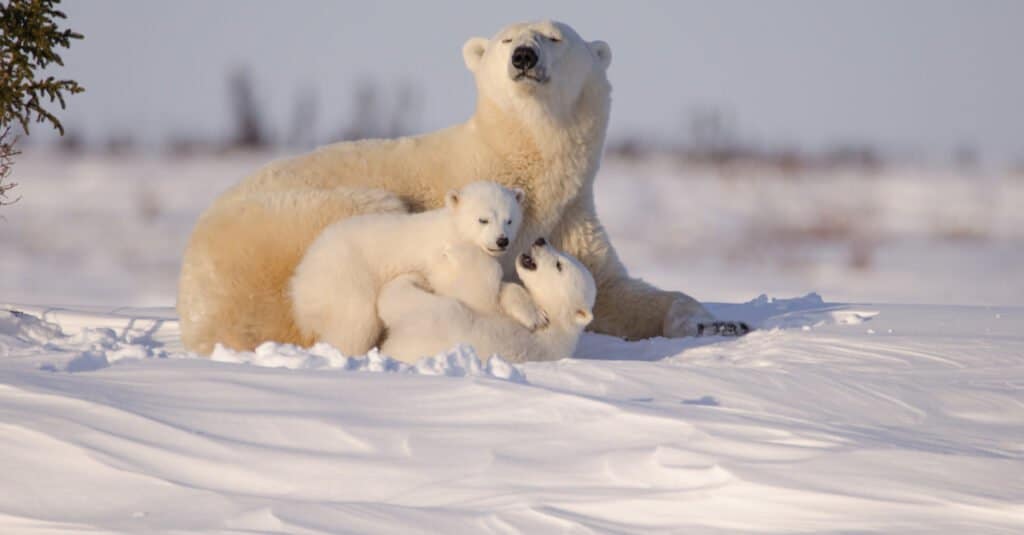
Polar bears are altricial
; they’re born helpless and need their parent’s care.
©Anne Kiel/Shutterstock.com
We can discover whether an animal’s altricial or precocial by measuring categories like development, nesting, social skills, and cognition.
In other words, what is the beginning of their life like? Do they start off feeling strong and ready to move around? Or are they small, helpless, and completely dependent on their parents, like humans?
Altricial species are born or hatched in an underdeveloped state. They are immature and unready to strike out on their own. These animals have a high reliance on their parents for care and support. They require a nest or shelter for protection and safety. In contrast, precocial species are advanced at birth or hatching and are relatively independent of an early stage. They may not need a nest and can adapt to open environments.
When it comes to cognitive development, altricial species show slower progress. And precocial species display faster development. They’re capable of more complex behaviors earlier in life.
In terms of social interactions, altricial species engage in more social interactions as they rely on their parents and siblings for learning and social cues. They heavily depend on their family for guidance. However, precocial species rely less on social interactions and more on their own instincts and abilities.
Growth Rate and Reproductive Strategies

Altricial species need constant support from their parents.
©AePatt Journey/Shutterstock.com
We can also compare altricial and precocial species based on growth rate and reproductive strategies.
Altricial species experience rapid growth due to the intensive parental care they receive. The constant attention and support from their parents contribute to their accelerated growth. In contrast, precocial species have a relatively slower growth rate; they rely on their own abilities from an early stage.
Reproductive strategies differ as well. Altricial species, like honey bees, tend to have larger litter or clutches, and their young have a high mortality rate. Precocial species, like rhinos and elephants, typically have smaller litter or clutches due to their offspring’s self-sufficiency from an early stage.
Honeybees vs. Elephants
Honeybees are altricial insects. The queen bee can lay several thousand eggs per day. The young bees, known as larvae, are helpless and entirely dependent on worker bees for food, warmth, and protection.
Elephants are precocial mammals. They usually give birth to a single calf after a gestation period of about 22 months. Within minutes of birth, the baby elephant can stand entirely on its own.
Altricial Animals
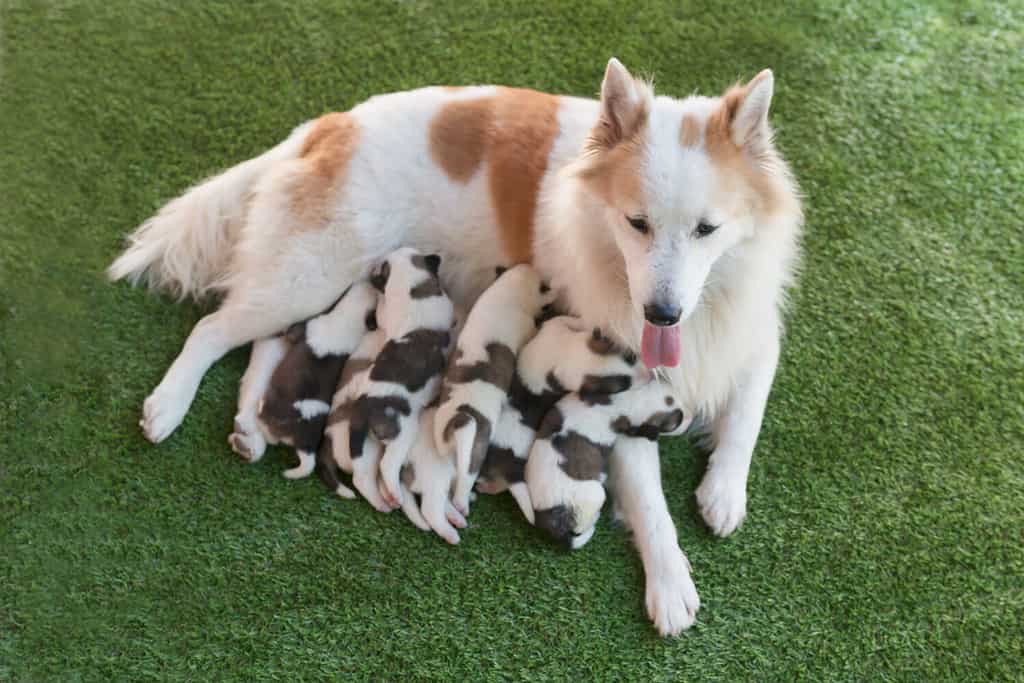
Domestic dogs are altricial animals.
©frank60/Shutterstock.com
Examples of altricial birds include pigeons, songbirds, woodpeckers, and hummingbirds. But bird species are just the start!
Animals of varying cuteness, uniqueness, and scientific interest can be altricial in the animal kingdom. These animals are those born in an underdeveloped state. When you picture these animal babies, think of naked mole rats. Altricial animals are born helpless, with closed eyes and hairless bodies.
Here’s a list of altricial animals:
- Humans
- Domestic cats
- Domestic dogs
- Lions
- Tigers
- Bears
- Wolves
- Red foxes
- Raccoons
- Eastern mole
- Woodpeckers
- Squirrels
- Common starling
- Hamsters
- Mice
- Rats
- Robin
- Ferrets
- Sugar gliders
- Skunks
- Badgers
- Weasels
- Minks
- Otters
Precocial Animals

Giraffes
are precocial animals.
©iStock.com/miroslav_1
Geese, ducks, turkeys, emus, and swans are precocial animals. They’re born or hatched in an advanced state.
Precocial animals are the big kids of the animal world. They like to do things on their own. These animals are relatively mature and mobile from the moment of birth. Some are almost immediately capable of walking, swimming, foraging, and even hunting!
Here’s a list of precocial animals:
- Giraffe
- Horse
- Zebra
- Elephant
- White Rhinoceros
- Reindeer
- Guinea Pig
- Hippopotamus
- Bison
- Brown Rat (not all rodent species are precocial, but this one is)
- Musk Ox
- Harbor Seal
- Llama
- Camel
- Wild Boar
- African Buffalo
- Cottontail Rabbit (not all rabbit species are precocial, but this one is)
- Arctic Muskox
- Impala
- Gazelle
- Water Buffalo
- Okapi
- Capybara
- Blue Wildebeest
- Domestic Chicken
Some reptiles, like turtles, are also precocial. They hatch from their eggs, ready to explore and find food.
Precocial animals are born in an advanced state and can quickly stand, walk around, and sometimes even swim. However, the degree of independence varies among species. Just because they’re capable doesn’t mean they’re ready to be alone.
What About Beavers?
Beaver babies are sometimes considered altricial, while others consider them precocial. The answer depends on who you ask. Referred to as “kits” or “pups,” beavers are born with their eyes open and weigh around 1 pound, which is pretty big compared to other mammals. These big beaver babies are fully furred and begin swimming almost as soon as they hit the water.
Can a Species Be Both Altricial and Precocial?

Some species, like gulls, can be semi-precocial.
©Joerg-Drescher/Shutterstock.com
Can an animal be both altricial and precocial? No, but they can fall somewhere in between.
Some species are semi-precocial or semi-altricial.
Examples of semi-precocial animals are gulls and terns. These birds are born fully feathered and hatch with open eyes. The bright-eyed babies start moving around right away.
Gulls and terns are capable of leaving the nest soon after hatching. But they don’t. Why? These semi-precocial baby birds don’t want to pass up a good situation. Young birds will stay at the nest and be fed by their parents. They stick around until the parents finally make them leave.
On the other hand, the species classified as semi-altricial are herons, hawks, and owls. Chicks of these species are born with feathers, but their eyes are closed.
These semi-altricial baby birds can’t leave the nest, even if they want to. They have to rely on their parents to provide them with food and safety until they can make it independently.
Are Humans Altricial or Precocial?
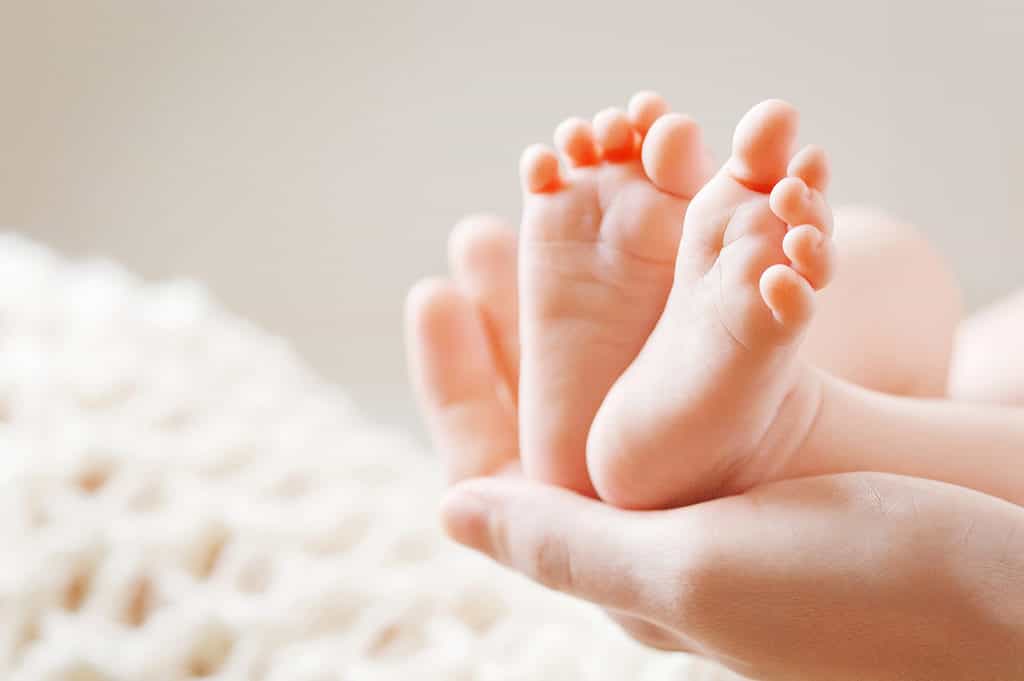
Humans are considered to be altricial.
©iStock.com/Liudmila_Fadzeyeva
Humans are altricial. Infants enter the world incapable of moving around independently and require extensive parental care. Compared to other animals, humans spend a lot of time with their parents, which gives us an enormous social advantage. We learn so much in those first few months about how to communicate.
Rather than relying on hardwired innate knowledge of social abilities, humans acquire necessary social information from their parents. Infants have a natural bias for paying attention to faces, which aids in social development. Parents teach us complex social skills, such as language, empathy, morality, and beyond.
By 9 to 18 months, infants begin selectively seeking and soliciting information. They’ll look to trusted social sources, like Mom or Dad, to get their answers. In other words, they start asking, “Why,” “What’s that,” and all of the other famous toddler questions. Each inquiry provides them with a deeper understanding of their environment.
Is a Chicken Precocial or Altricial?
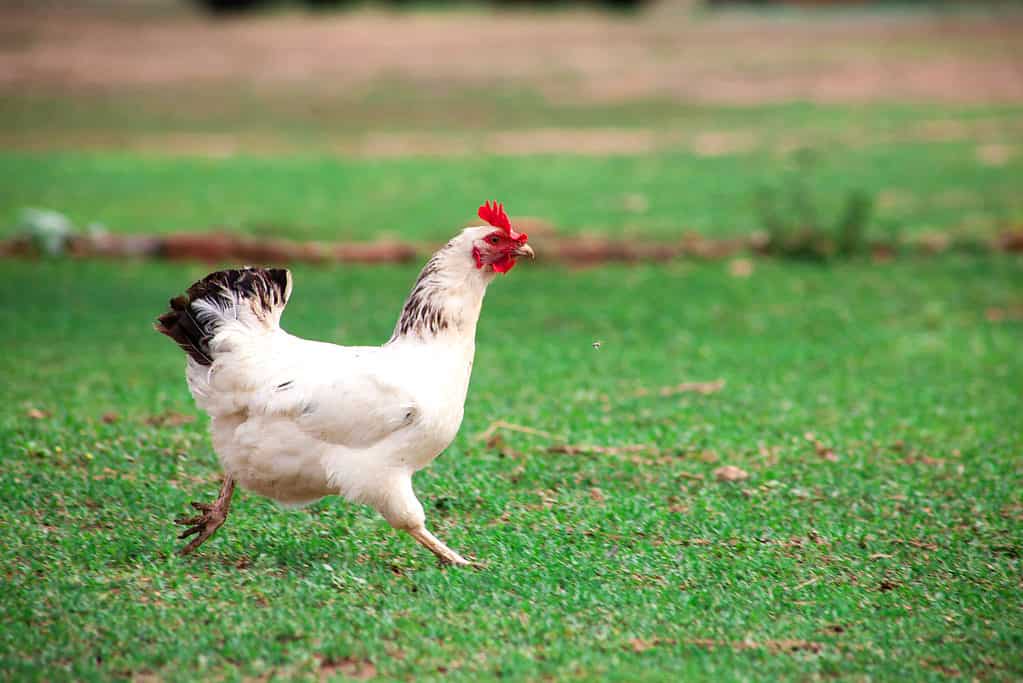
Chickens are precocial.
©iStock.com/Mironmax Studio
Chickens are considered precocial birds. They can walk and explore shortly after hatching from their eggs. They also know how to feather-eat, a strange but helpful behavior young chicks display.
Feather-eating involves pecking and ingesting feathers from themselves or other chicks. The feathers likely provide proteins for their tiny growing bodies.
Chicks may be precocial, but they still need their Mom. Mother chickens teach them what the pecking order is all about, how to forage for food, and how to avoid danger. They lead by example, showing the fluffy chicks how to behave.
Altricial vs. Precocial: Were Dinosaurs Good Parents?
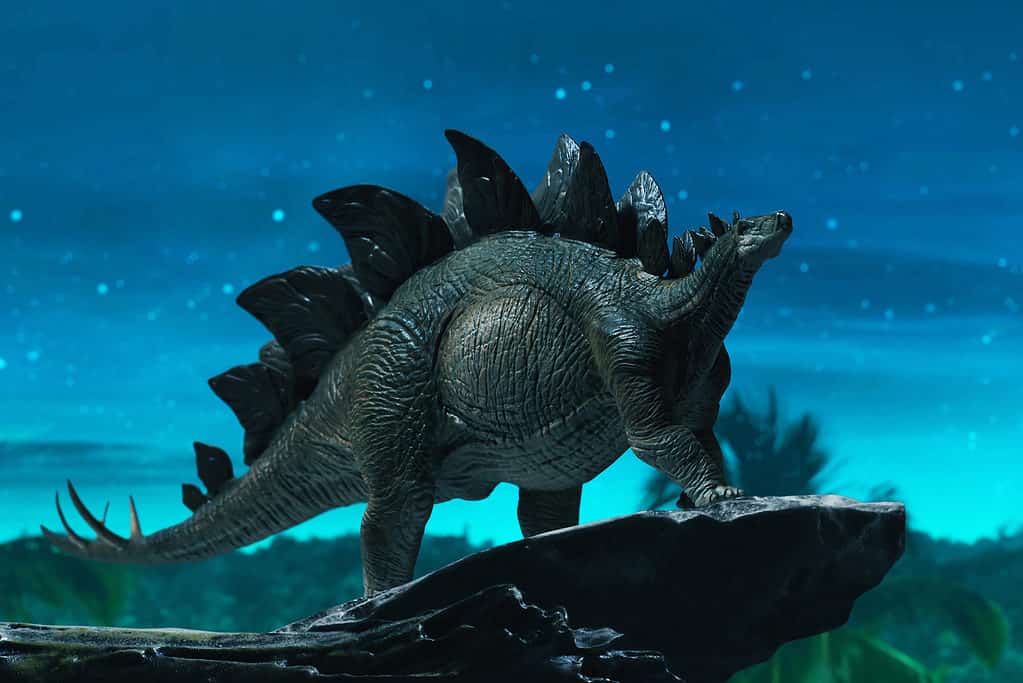
Some dinosaurs may have been altricial and received extended parental care.
©iStock.com/FOTOKITA
It’s difficult to say if dinosaurs are altricial or precocial. Most paleontologists consider carnivorous dinosaurs and reptiles to be more precocial. But even precocial reptiles, including dinosaurs, still required some degree of parental care.
The discovery of the Citipati osmolskae fossil, nicknamed ‘Big Mama,‘ provides evidence of dinosaur behavior with their eggs. The fossil of a dinosaur curled up on its nest is evidence of protective behavior.
Then there’s the Maiasaura genus. The name Maiasaura means “the good mother,” and this species appeared to be just that.
During the Cretaceous period, the Maiasaura, a duck-billed dinosaur, is believed to have lived in large colonies, laying 30 to 40 ostrich-sized eggs in carefully constructed nests. Unlike other dinosaurs, these dino mothers didn’t abandon their eggs after laying them. When the baby hatched, they were about a foot long and were welcomed warmly into the herd.
Precociality in Live-Bearing Fish
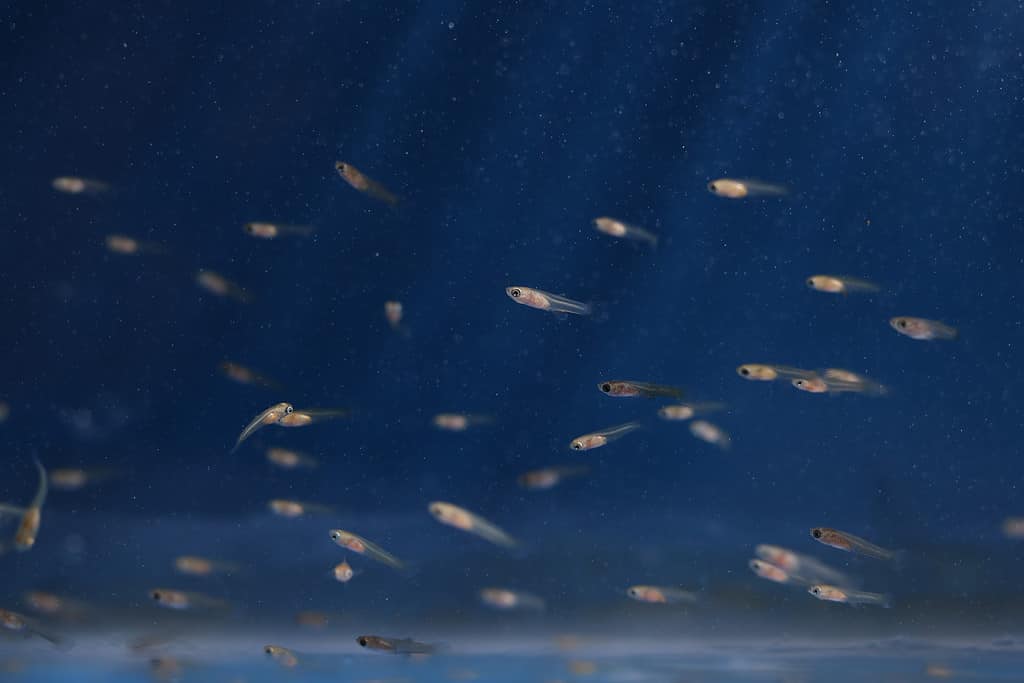
Guppy fry are precocial.
©Tio Gian/Shutterstock.com
Live-bearing fish are precocial, exhibiting hunting behavior shortly after birth. A good example would be the metallic livebearers, born hunters. Using a mix of innate abilities and rapid postnatal development, they begin hunting right after birth.
There’s a big advantage to being a live-bearing fish. These precocial species have a higher survival rate for their offspring since the fry are more developed. Their young have a better chance of escaping predators compared to eggs.
There is a lot of live-bearing precocial fish; here’s a list of a few you should know about:
- Swordtails
- Guppies
- Molly Fish
- Platy Fish
- Endler’s Livebearer
- Seahorses
Guppy fry is born life (rather than hatched from eggs). These little fish can swim and find their own food immediately after birth. Seahorses are also born hungry and capable of feeding themselves.
Male seahorses carry the developing embryos in a specialized pouch until they give birth. Once the seahorse fry is released, they feast on small organisms in the water, like copepods and brine shrimp.
Birds and Precociality vs. Altriciality
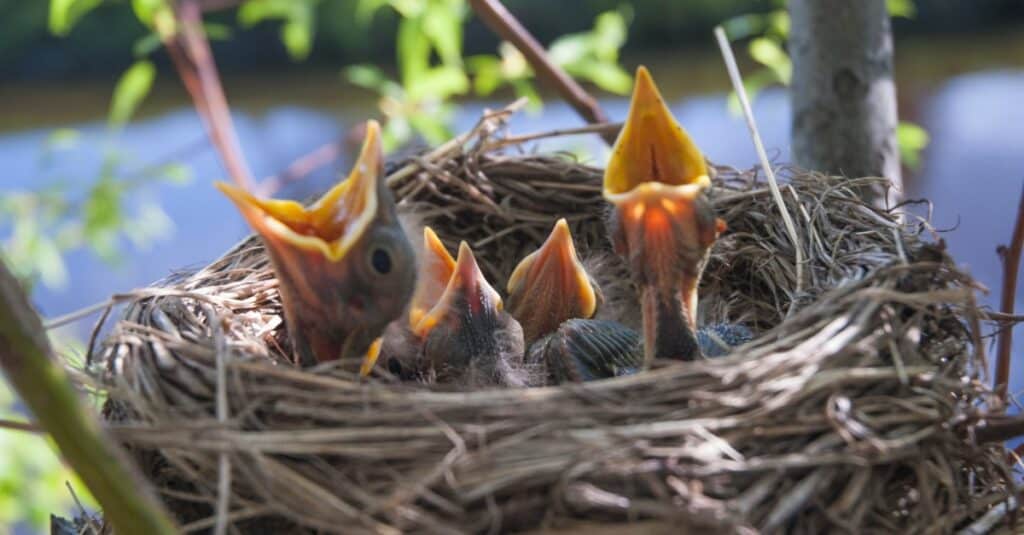
Baby robins are altricial and need extended parental care.
©iStock.com/markhonosvitaly
Altricial birds typically nest in trees, while precocial birds often dwell on the ground.
Songbirds, woodpeckers, and hummingbirds are all altricial bird species; they need a lot of parental care. They’re born with their eyes closed and unable to move around on their own.
Here’s a list of altricial birds:
- Robins
- Warblers
- Sparrows
- Finches
- Flycatchers
- Thrushes
- Pigeons and Doves
- Parrots and Cockatoos
- Owls
- Hummingbirds
- Kingfishers
Precocial Bird Species
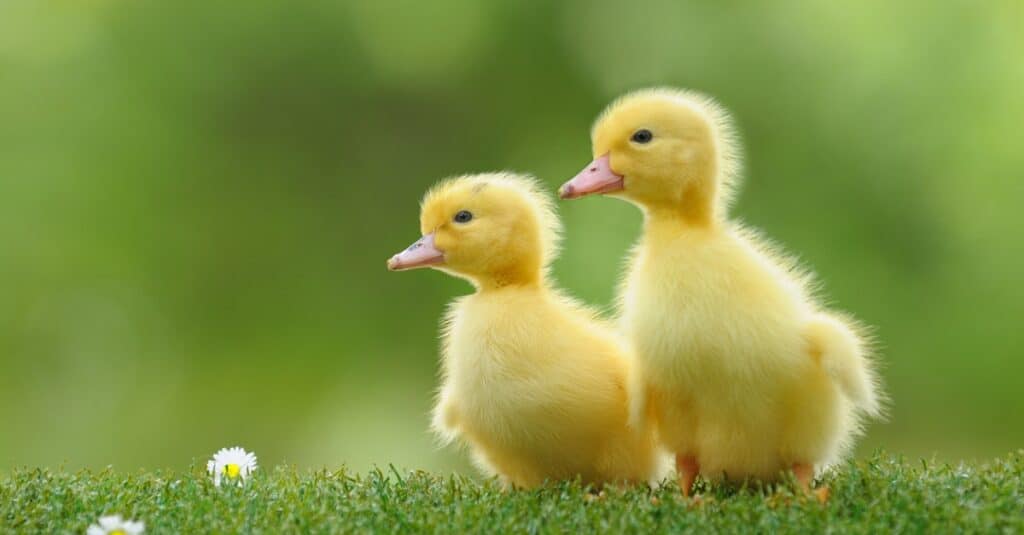
Ducklings are precocial; they only need limited parental care.
©iStock.com/therry
Precocial bird species are more independent. Take, for instance, the killdeer chicks who hatch with their eyes open.
Killdeer chicks emerge from their shells with a full coat of downy feathers. Within minutes, these chicks can run around and feed themselves. However, like a lot of precocial birds, they still depend on their parents for protection.
Here are more precocial bird species; these birds are born, eyes open, and ready to move!
- Ducks
- Geese
- Swans
- Quails
- Pheasants
- Turkeys
- Grouse
- Shorebirds
- Jacanas
- Rails
- Ostriches
- Emus
- Rhea
Baby Emus: Another Precocial Bird Species
Emu eggs are large, green, and covered with white speckles. When it’s time for the chick to emerge, these big babies break out of the shell, ready for action!
Baby emus are about 5 inches tall and can weigh 17.6 oz, which is big for a baby bird. They hatch covered in a fluffy down, and their faces are spotted rather than striped.
Baby emus feed themselves and are able to walk and feed within a few days of hatching. These chicks gain weight and grow very quickly. It’s common for them to reach their adult size around their first birthday, but some are fully grown by eight months.
Final Thoughts
Today, you learned how baby animals, including yourself, begin life! Altricial species, such as humans, dogs, and songbirds, are born in a relatively helpless state. On the flip side, precocial species, like elephants, are ready to engage with their environment shortly after birth.
Altricial animals require significant parental care for their survival and growth. Precocial species are more independent but still often rely on their parents for protection and survival guidance. This is seen in chickens who look to their mother for advice on getting along with the flock.
Then there are the animals that won’t commit. They’re not altricial; they’re not precocial; they fall somewhere in between. Species, like gulls and terns, fall somewhere in the middle, exhibiting characteristics of both altricial and precocial species.
Animals come into this world in so many different ways. Some hatch from eggs, while others are born live. Some are tiny and helpless, relying on their parents for everything, while others are born ready to explore and take on the world. Life is full of unexpected and delightful forms. Happy exploring!
The photo featured at the top of this post is © Ray Hennessy/Shutterstock.com
Thank you for reading! Have some feedback for us? Contact the AZ Animals editorial team.






